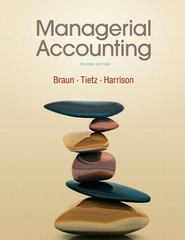Answered step by step
Verified Expert Solution
Question
1 Approved Answer
Help In the 1990s and into the new century, a merger bubble similar to that of the 1960s to mid-1980s happened. The 1960s acquisition operation
Help In the 1990s and into the new century, a merger bubble similar to that of the 1960s to mid-1980s happened. The 1960s acquisition operation was characterized by rising stock values and a strong reliance on pooling-of-interests accounting. The operation in the mid-1980s was characterized by a series of stock buybacks and investments involving junk bonds. In the other side, merger operation in the early 1990s continued to be dominated by cash and standard debt acquisitions. By the mid-1990s, though, several corporate combinations were being accomplished by stock markets. The essence of several corporate acquisitions shifted in the first decade of this century, and by late 2008, the takeover boom had slowed significantly. a. Which causes, in your opinion, played a significant role in promoting market combinations in the 1990s? Which of these was more critical? Justify your role. b. Why were so many market combinations in the mid- to late-1990s accomplished by stock exchanges? c. Which variables had a significant impact on mergers in the mid-2000s? How did numerous corporate acquisitions during this period vary from earlier mergers? Why did the acquisition bubble come to an abrupt halt in late 2008 and early 2009. d. If a comprehensive analysis of the tax code is conducted, will it be prudent or imprudent public policy to increase tax benefits for company mergers? Provide three possible rewards. e. If the FASB wishes to promote further mergers, what course of action can it pursue in terms of revising or repealing current accounting standards? Justify. Gabriella told the shareholders of Calvin Company of its interest in buying regulated Calvin ownership and proposed to trade for any share of Calvin Company submitted before 31 July 2020, one share of Gabriella's Vivian share. Gabriela traded stock for $35 a share and Calvin's stock traded for $28 at the time of the sale. Gabriela purchased and converted Calvin's properties and liabilities to his books all of the stock of Calvin before 31 December 2020. In addition to issuing bonds, Gabriela charged a finder fee of $200,000, stock and audit fees of $60,000, lawyers fees of $90,000 to move the properties and liabilities of Calvn to Gabriela as well as legal fees of $370,000 to conclude proceedings by the shareholders of Calvin which claimed that the bid price fell short of Calvin's net asset's fair value per share. The Vice-President of Finance of Gabriela company requested you to study existing accounting literature and draft the memo reporting the required processing of new expenses at the period Calvin Company was purchased. Support guiDJce from credible financial reporting guidelines and other literature of quotes and quotations. What types of circumstances would encourage management to establish a complex organizational structure? How would the decision to dispose of a segment of operations using a split-off rather than a spin-off impact the financial statements of the company making the distribution? What situations will motivate management to create a complicated organizational structure? How does the move to split-off rather than spin-off a division of operations affect the financial records of the business doing the distribution? This is all. No missing information
Step by Step Solution
There are 3 Steps involved in it
Step: 1

Get Instant Access to Expert-Tailored Solutions
See step-by-step solutions with expert insights and AI powered tools for academic success
Step: 2

Step: 3

Ace Your Homework with AI
Get the answers you need in no time with our AI-driven, step-by-step assistance
Get Started


